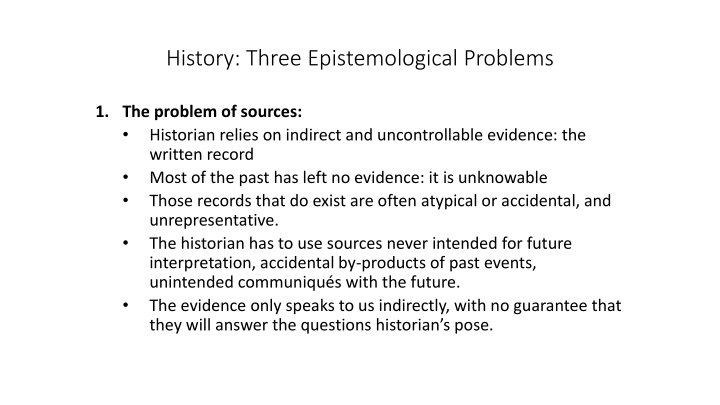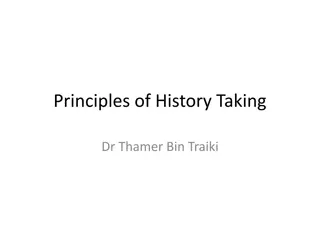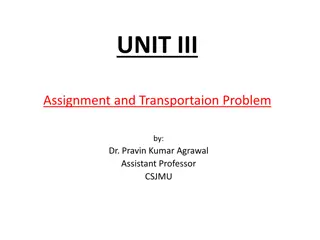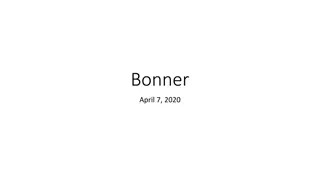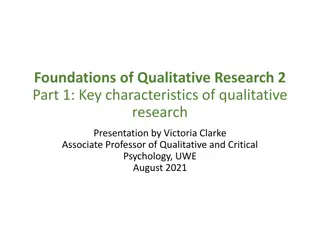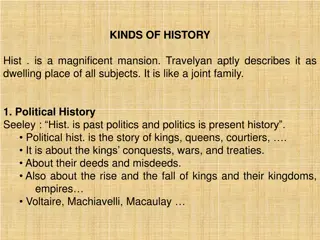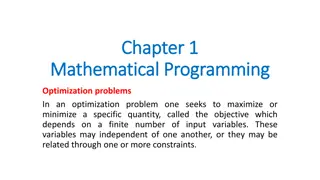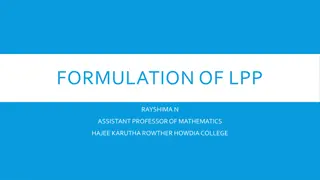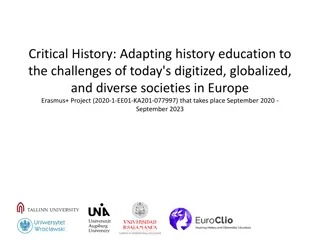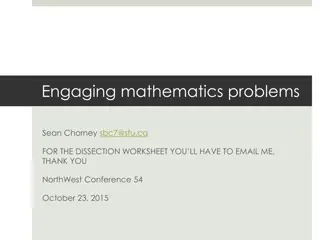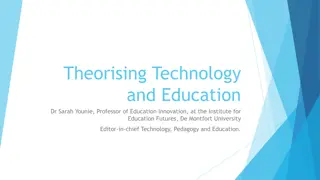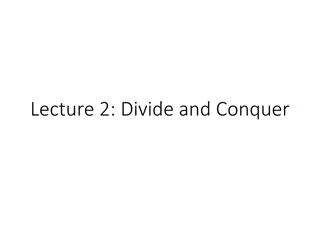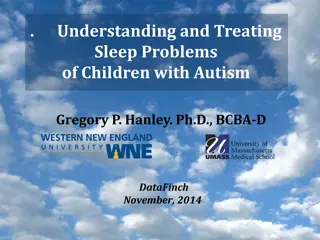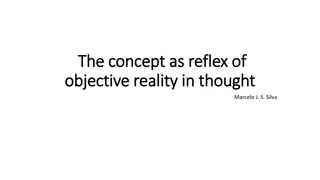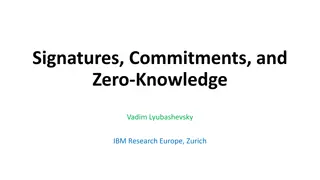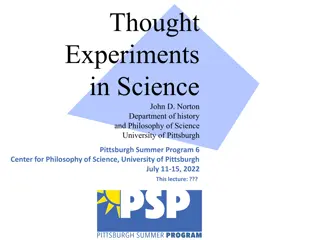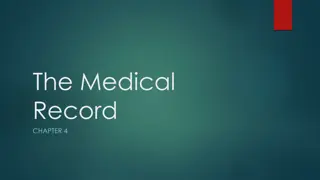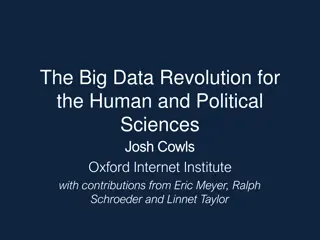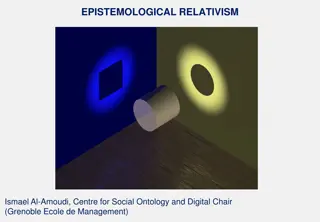Epistemological Problems in History
Historians face three epistemological challenges in their quest to understand the past: sourcing indirect evidence, interpreting historical methods, and crafting narratives based on the limitations of historical texts. The complexities of historical research, interpretation, and representation underscore the dynamic nature of historical inquiry, reminding us that history is a continual process of exploration and reinterpretation.
Download Presentation

Please find below an Image/Link to download the presentation.
The content on the website is provided AS IS for your information and personal use only. It may not be sold, licensed, or shared on other websites without obtaining consent from the author.If you encounter any issues during the download, it is possible that the publisher has removed the file from their server.
You are allowed to download the files provided on this website for personal or commercial use, subject to the condition that they are used lawfully. All files are the property of their respective owners.
The content on the website is provided AS IS for your information and personal use only. It may not be sold, licensed, or shared on other websites without obtaining consent from the author.
E N D
Presentation Transcript
History: Three Epistemological Problems 1. The problem of sources: Historian relies on indirect and uncontrollable evidence: the written record Most of the past has left no evidence: it is unknowable Those records that do exist are often atypical or accidental, and unrepresentative. The historian has to use sources never intended for future interpretation, accidental by-products of past events, unintended communiqu s with the future. The evidence only speaks to us indirectly, with no guarantee that they will answer the questions historian s pose.
History: Three Epistemological Problems 2. The problem of method: the process of historical research History lacks the ability to control the variables so essential to the scientific method. All historians can do is interpret; they construct plausible meanings from the evidence that the past has left behind. The source documents themselves are someone s interpretation. The interpretation of the past evidence by the historians themselves. Historians look back on the past seeing connections between events, the significance, and the patterns of cause and effect that were impossible for those living through the events to see for themselves.
History: Three Epistemological Problems 2. The problem of method: the process of historical research Historians interpretation, cont. Each generation writes its own history of the French Revolution or of the First World War Italian philosopher Benedetto Croce: All history is contemporary history. During the 20thcentury history became concerned with the working classes, women and ethnic minorities; groups that had literally been hidden from history History is never complete; it is always a work in progress
History: Three Epistemological Problems 3. The problem of the historian s product: writing the text History cannot be compared with the past and cannot be verified against the past, because the past and history are different things. The correspondence theory of truth does not operate The historical text, the narrative account can never correspond to the past as it was, because unlike history the past was not a text, it was a series of events, experiences, situations, etc. History has no absolute or objective reality to compare itself to, only other texts.
History: Three Epistemological Problems 3. The problem of the historian s product: writing the text What does our society consider to be good history? Factual accuracy is assumed and does not in itself constitute good history. The historian s depth of research (historian s craft #1) The historian s ability to bring the past alive ; his/her artistic effectiveness (historian s craft #2)
History: Three Epistemological Problems Orlando Figes - A People's Tragedy Snow had fallen in the night and St Petersburg awoke to an eerie silence on that Sunday morning, 9 January 1905. Soon after dawn the workers and their families congregated in churches to pray for a peaceful end to the day Singing hymns and carrying icons and crosses, they formed something more like a religious procession than a workers' demonstration. Bystanders took off their hats and crossed themselves as they passed. And yet there was no doubt that the marchers' lives were in danger Church bells rang and their golden domes sparkled in the sun on that Sunday morning as the long columns marched across the ice towards the centre of the city. In the front ranks were the women and children, dressed in their Sunday best, who had been placed there to deter the soldiers from shooting. At the head of the largest column was the bearded figure of Father Gapon in a long white cassock carrying a crucifix. Behind him was a portrait of the Tsar and a large white banner with the words: 'Soldiers do not shoot at the people!' Red flags had been banned Suddenly, a bugle sounded and the soldiers fired into the crowd. A young girl, who had climbed up on to an iron fence to get a better view, was crucified to it by the hail of bullets. A small boy, who had mounted the equestrian statue of Prince Przewalski, was hurled into the air by a volley of artillery. Other children were hit and fell from the trees where they had been perching When the firing finally stopped and the survivors looked around at the dead and wounded bodies on the ground there was one vital moment, the turning-point of the whole revolution, when their mood suddenly changed from disbelief to anger
